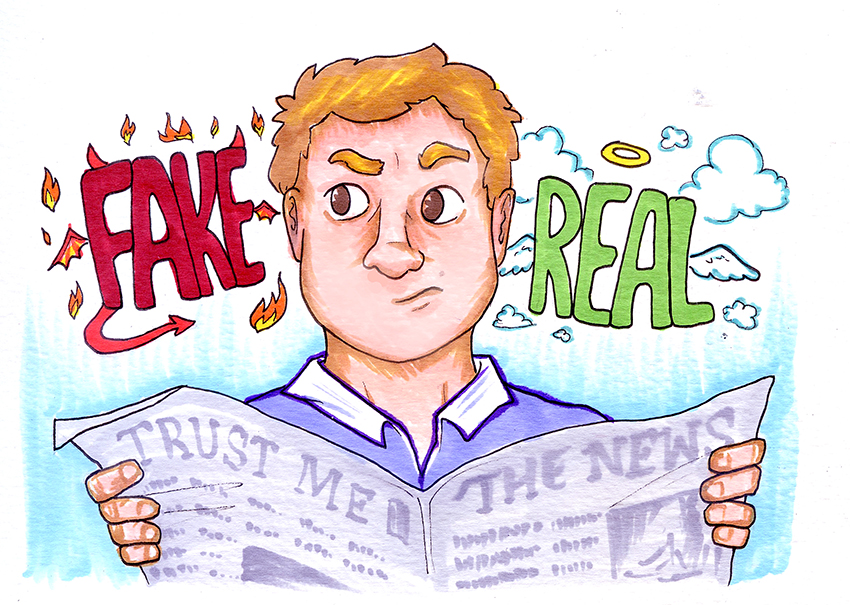Over the past year, the term “fake news” has become a buzzword for politicians and media sources alike, but UT professors say the concept has deeper roots.
“Fake news … reports on things that are factually untrue, not debated perceptions,” said Natalie Stroud, communication studies associate professor and assistant director of the Strauss Institute for Civic Life.
Matt McGlone, associate professor of communication studies and expert on lies and deception, said fake news in the U.S. dates back to the late 1800s during which the Hearst Corporation made up news to get America into the Spanish-American war. He added that fake news outside of the U.S. can be traced even further, to propaganda efforts from the Greeks to the era of Alexander the Great.
“Ideally you read news to be informed, but that is not the only reason we read news,” McGlone said. “We read news to see our expectations satisfied.”
Stroud said this idea of confirmation bias, or only believing information that validates one’s own beliefs, is intertwined with political beliefs and mass media.
“We have seen historically that people gravitate towards news that matches their political beliefs,” Stroud said. “If a fake news story affirms something about a specific candidate, it’s easier for us to accept it without questioning it.”
Stroud said more people now than ever are getting their news from social media, including Facebook and Twitter. She added that while some criticize social media for using algorithms that show users similar things to what they have already liked, people are psychologically predisposed to do this most of the time.
McGlone said this is a change from widespread broadcast news and that social media has led to poorly written news stories that use lower quality sources.
“(This) tells you something about many of the people who are spreading the fake news,” McGlone said. “They aren’t reading them, but if the headline matches what (they) already believe then (they) will send it off.”
Art Markman, psychology professor, said one of the psychological effects of fake news stories is the continued influence effect, where people find out an article is fake, but the information continues to affect their judgement and beliefs, due to the emotional influences of fake news.
“A lot of the fake news we get is designed not just to create a belief in a particular fact but to create an emotional reaction,” Markman said.
Markman said fake news sources can make it difficult for readers to separate correct and incorrect information.
“The danger with the onslaught of fake news is that it undermines people’s ability to figure out who the reliable sources are,” Markman said.
Last November, Oxford Dictionary announced the 2016 word of the year was “post-truth,” which means objective facts are less influential in shaping public opinion than emotional appeals. McGlone said this is a major symbol of the post-modern era of politics that we live in now.
“Postmodernism is that truth is relative, and that your truth is different from my truth, that there’s no real or objective truth,” McGlone said. “But if there is no objective truth, then how can you determine what a lie is?”
McGlone said fake news, a term being thrown around on every outlet, channel and even more demonstrably from our president, has caused a “destabilizing” effect in the trust and sense of security that the public feels for the media.
“We are seeing a postmodern nightmare,” McGlone said. “In addition to it existing, fake news becomes an accusation that is being hurled to challenge anything that casts you in a bad light.”
McGlone said people can determine truth through observation, scientific reason or an authority figure, but these methods are all being challenged today.
“Things like media and information literacy are probably the best ways to solve our fake news problem,” McGlone said. “They are not quick fixes by any means, but they are the best ways to instill an enduring sense of how to judge an information’s value to you.”














